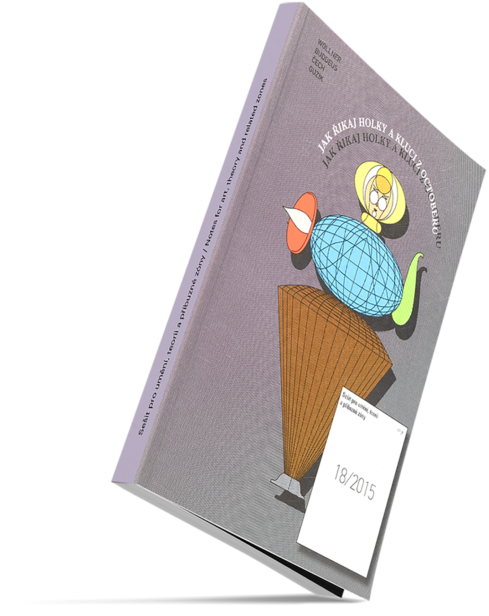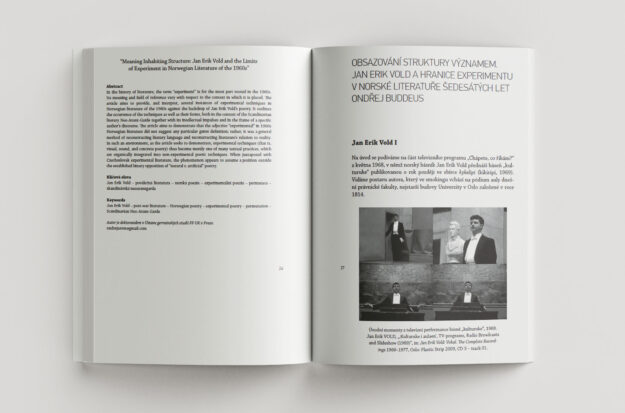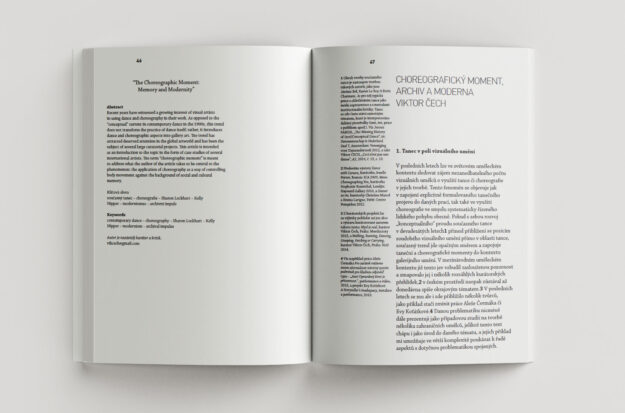This issue of the Notebook for Art, Theory and Related Zones contains two studies from the sphere of experimental poetry, and a third that examines the convergence of contemporary visual arts and professional dance. As always, the Notebook ends with a review of an important specialist publication. Jan Wollner looks at the parallels between the journal-style texts of Pavel Juráček, the experimental poetry of Bohumila Grögerová and Jiří Hiršal, and the literary criticism of Jiří Pechar and the discourse of psychiatry, in order to highlight the conflicting ways in which the term “experiment” was used in the cultural life of Czechoslovakia at the end of the 1960s. Ondřej Buddeus also looks at the experimental poetry of this decade in a piece focusing on the Norwegian poet Jan Erik Vold. Buddeus maintains that the linguistic permutations and the deconstruction of poetic subjectivity to be found in Vold’s work derive organically from the ethos of the Scandinavian literary neo-avantgarde. Viktor Čech associates the growing popularity of dance and choreography in the contemporary visual arts with the broader phenomenon of the “archival impulse”, within which modern artists return to the reconstruction and re-contextualisation of the legacy of modernism. Hubert Guzik, reviewing the anthology published last year entitled Things and Words, finds it to be pioneering. However, he regrets the fact that, alongside the voices of the cultural avant-garde, we do not hear those of the technical and economic avant-garde.
Content
Jan Wollner
The Boundaries of Experiment
“Experiment” was one of the most frequent terms in discussions on the arts, politics, and science in in 1960s Czechoslovakia. Instead of developing any strict definition of the term, the essay seeks to trace its various, often contradictory, and changing meanings. The same term was used by representatives of state institutions as well as by the so-called “independent” or “alternative” artists. It was variously declared as a source of independent creativity, a passing fashion, a scientific method, a space of freedom, or a symptom of insanity. The essay uses a couple of examples to show the ambiguous relationships among these meanings.
Ondřej Buddeus
Meaning Inhabiting Structure: Jan Erik Vold and the Limits of Experiment in Norwegian Literature of the 1960s
In the history of literature, the term “experiment” is for the most part rooted in the 1960s. Its meaning and field of reference vary with respect to the context in which it is placed. The article aims to provide, and interpret, several instances of experimental techniques in Norwegian literature of the 1960s against the backdrop of Jan Erik Vold’s poetry. It outlines the occurrence of the techniques as well as their forms, both in the context of the Scandinavian literary Neo-Avant-Garde together with its intellectual impulses and in the frame of a specific author’s discourse. The article aims to demonstrate that the adjective “experimental” in 1960s Norwegian literature did not suggest any particular genre definition; rather, it was a general method of reconstructing literary language and reconstructing literature’s relation to reality. In such an environment, as the article seeks to demonstrate, experimental techniques (that is, visual, sound, and concrete poetry) thus become merely one of many textual practices, which are organically integrated into non-experimental poetic techniques. When juxtaposed with Czechoslovak experimental literature, the phenomenon appears to assume a position outside the established binary opposition of “natural v. artificial” poetry.
Viktor Čech
The Choreographic Moment: Memory and Modernity
Recent years have witnessed a growing interest of visual artists in using dance and choreography in their work. As opposed to the “conceptual” current in contemporary dance in the 1990s, this trend does not transform the practice of dance itself; rather, it introduces dance and choreographic aspects into gallery art. The trend has attracted deserved attention in the global artworld and has been the subject of several large curatorial projects. This article is intended as an introduction to the topic in the form of case studies of several international artists. The term “choreographic moment” is meant to address what the author of the article takes to be central to the phenomenon: the application of choreography as a way of controlling body movement against the background of social and cultural memory.



